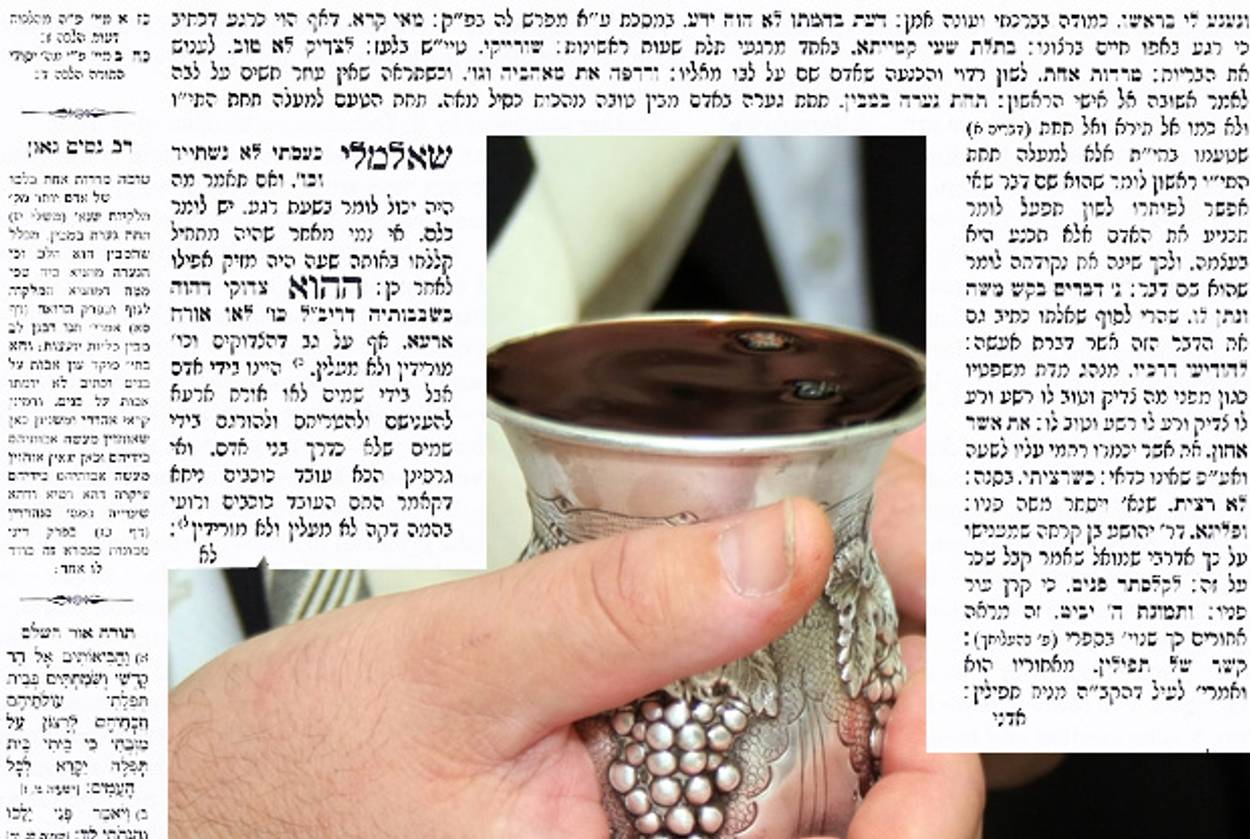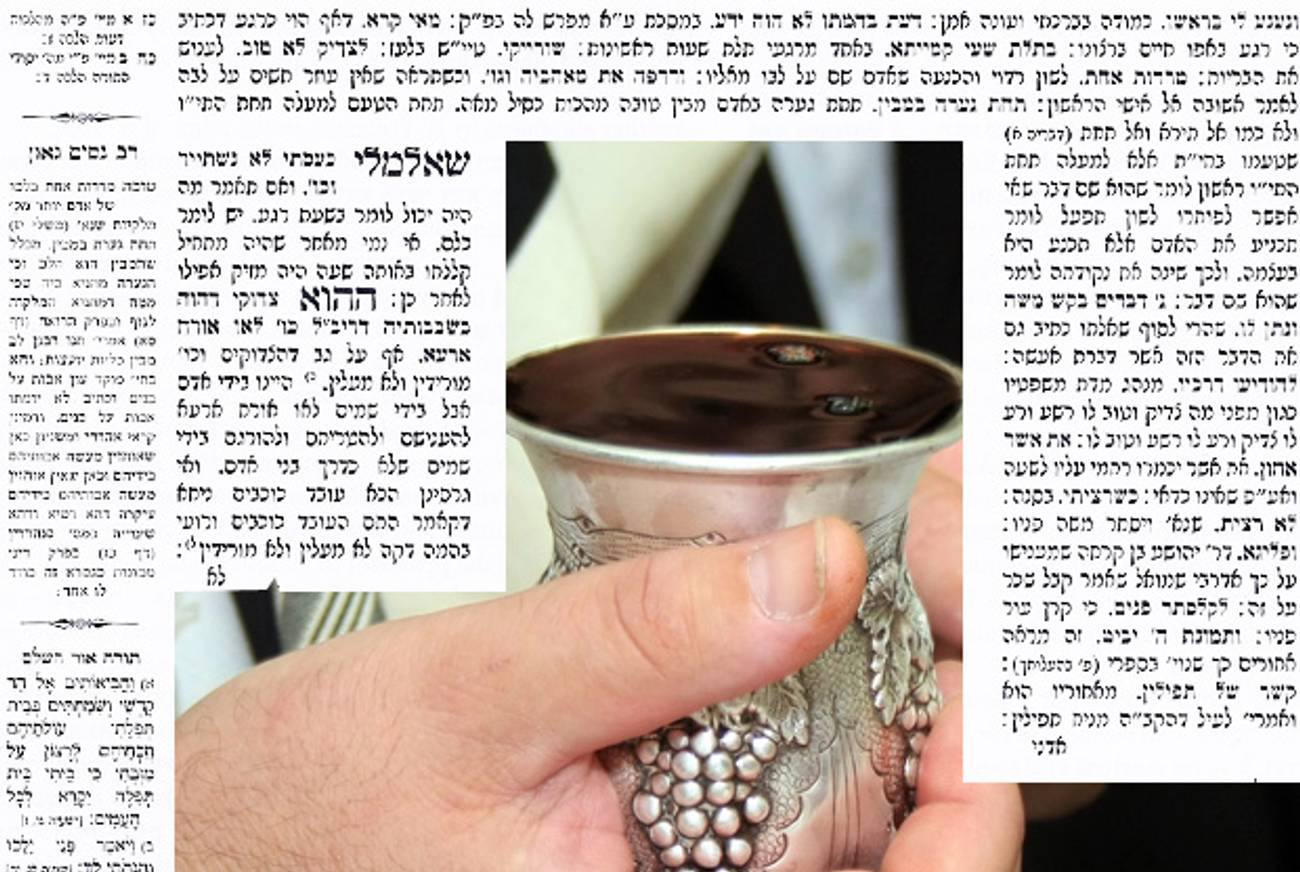Talmudic Pride and Prejudice
This week’s Daf Yomi considers—with Chaucerian verve—whether a rabbinic elite spoke for the Jewish people




Literary critic Adam Kirsch is reading a page of Talmud a day, along with Jews around the world. His next column will publish October 16, after Sukkot and Simchat Torah.
For me, one of the powerful lessons of reading Berachot, the tractate on prayers, has been to see just how ancient and continuous the Jewish tradition really is. The Shema, the Amidah, the Birkat—we still recite all these prayers today, in almost or exactly the same form as the Tannaim, the rabbis of the Mishna, did 2,000 years ago. What has changed, as suggested by this week’s reading—which is largely focused on the prayer after meals, the Birkat Hamazon—is our attitude toward precedence and rank.
For the rabbis of the Talmud, as for the elite of any premodern society, gradations of prestige and authority were part of the nature of things. At many moments in this week’s Daf Yomi, we see that they could be as touchy about these distinctions as any courtier at Versailles. The difference is that, in post-Temple Judaism, the lack of traditional power structures—a royal court, an army, a functioning priesthood—meant that new forms of hierarchy had to be created; and they were based, in a way that came to seem essentially Jewish, less on birth or wealth than on learning.
This becomes clear in chapter 7 of Berachot, which is primarily devoted to the rules of zimun. When three or more people eat together, they are required to practice zimun—that is, to formally invite one another to give thanks as a group. The call and response formulas of this invitation will be familiar to anyone who has prayed the Birkat (“Rabotai, n’varech,” “Y’hi shem Adonai m’varach m’atah v’ad olam,” and so on). The rabbis clarify who is bound by this obligation: adult males past the age of puberty (which is judged, pragmatically, by the sprouting of two pubic hairs), but not mixed groups of women and slaves (who should not dine together, lest they engage in immodest behavior). There is also detailed discussion of the proper formulas to be used for groups of different sizes; what to do if one man in a group of three leaves before the meal ends, or if a new arrival joins a meal in progress; and when to count waiters as participants in the meal.
The leader of the zimun, we learn in Berachot 47a,should be the “greatest” man in the party: “the halachah is that the greatest one of the group recites Birkat Haazon, even though he came at the end of the meal.” Greatness, for the rabbis, is to be measured by age and learning. But what happens when sages of equal stature eat together? That is the problem that arises in Berachot 45a, where it is related that Yehudah bar Mereimar, Mar bar Rav Ashi, and Rav Acha of Difti once shared a meal, and “there was none among them who was more distinguished than his fellows to recite the blessing for them.” They decided that, in this case, it would be better for the three to split up and each recite the Birkat individually, without zimun. However, they were later chastised for this by Mereimar, Yehudah’s father, who told them: “The Birkat Hamazon requirement you have fulfilled, but the zimun requirement you have not fulfilled.”
The story seems to follow a pattern we have seen several times already—an example of rabbinic pride and its punishment. Because the three rabbis could not subordinate themselves to one another, they lost out on the chance to perform a mitzvah. And the more closely I read, the more questions of honor and submission seemed to inform this week’s reading. Later in the same daf, for instance, a question arises with regard to the obligation of working men. The Birkat is made up of four blessings, of which the first three are biblically instituted, while the fourth was written after the destruction of the Temple and is therefore of lesser authority. Is it incumbent on workers, who have less time to spare for their meals, to recite the fourth blessing?
Abaye, we learn, would say a loud “Amen” after the third blessing, in order to signal to workers that they could leave and get back to work. Rav Ashi, on the other hand, would whisper his “Amen,” so the workers would stay through the end. The Talmud gives no definitive judgment as to which rabbi was right, leaving the reader to wonder about their reasoning. Both intended to be benevolent: Abaye wanted to save the workers’ time, while Ashi wanted to include them as full members of the praying community. Which was more genuinely respectful?
These issues come to a head in Berachot 47b, where we hear a term that we will meet again in the Talmud: am haaretz. An am haaretz—literally, “people of the land,” with the implication of a peasant, a boor—is a Jew who is ignorant and unobservant, and the rabbis hold him in great contempt. “We do not join in zimun on account of an am haaretz,” a baraita holds: That is, when Torah scholars dine together, they can’t count non-scholars toward a quorum (though when non-scholars are on their own, they are still obligated to pray together).
The Talmud goes on to give several criteria for identifying an am haaretz: “anyone who does not tithe his produce properly,” “anyone who does not recite the Shema in the evening and the morning,” “anyone who does not wear tefillin,” “anyone who does not have a mezuzah on his home’s entrance.” Finally, the most sweeping definition of all: “even if one read scripture and studied Mishna, but did not serve Torah scholars”—that is, did not master Gemara—“he is an am haaretz.” By that definition, of course, 90 percent of modern Jews fall into this shameful category.
But the very existence of the category also raises some interesting questions about Jewish life in the Talmudic period. What percentage of Jews at that time, I wonder, could be considered am haaretz? A majority? If so, does that mean that the Talmud is actually quite unrepresentative of the values and practices of Jewish life at the time it was written? Is it the product of a small elite group, which came to define the people as a whole?
Certainly, this week’s reading offered one unforgettable example of what academics would call a “subaltern” voice, protesting against the self-satisfaction of the rabbinic elite. In Berachot 51b, we meet Ulla, a sage who dined at the house of Rav Nachman. When Ulla recited Birkat Hamazon, he gave the cup he had blessed to Nachman to drink. Nachman wanted to send the cup to his wife, Yalta, so she could share in its holiness; but Ulla forbade this, on the grounds that “the fruits of the woman’s belly are blessed only through the fruits of the husband’s belly.” In other words, it was enough for the husband to drink, since the blessing would, as it were, “trickle down” to his wife.
But Yalta overheard Ulla’s verdict and, to put it mildly, she did not agree: “She stood up in anger and went up to the wine-storage room, where she broke four hundred barrels of wine.” This was enough to change Ulla’s mind, and he sent her a cup with the message, “All the wine in this barrel is considered like the cup of blessing.” To which Yalta responded: “From itinerant peddlers come idle words, and from old rags come lice.” It is a wonderfully Chaucerian episode—I imagine Yalta as a Wife of Bath figure, passionate and unsubmissive—and shows how legal hierarchies could fade, even then, in the face of a woman’s passion for respect.
***
Like this article? Sign up for our Daily Digest to get Tablet Magazine’s new content in your inbox each morning.
Adam Kirsch is a poet and literary critic, whose books include The People and the Books: 18 Classics of Jewish Literature.
Adam Kirsch is a poet and literary critic, whose books include The People and the Books: 18 Classics of Jewish Literature.